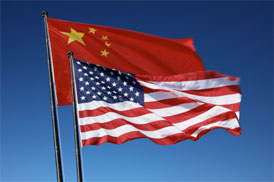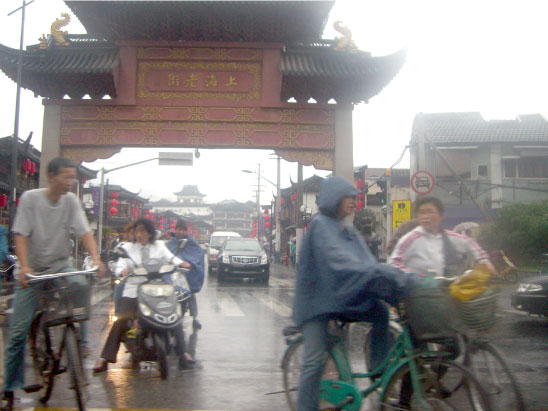China — Critical to U.S. Company’s Growth Strategy
 U.S. companies seeking growth and profitability should consider developing a strategic plan to enter and/or sell more of their products in China. No other market in the world has the size, breadth and growth rates as China. On a recent trip to China, I was impressed not only with the massive consumption of imported food and beverage products by Chinese consumers, but also the plethora of Chinese traders and retailers which plan to increase the number and amount of imported foods. Savvy international companies understand this, and have made plans to exploit this growth and the Chinese consumer’s “hunger” for imported food products. “Asia clearly represents the most significant growth opportunity on a go-forward basis,” said Howard Schultz, CEO of Starbucks, in an interview.1 But he said the company would plan its China growth carefully. “Over time there will be thousands of stores in China,” said Mr. Schultz. “But it’s a complicated market that requires significant discipline and thoughtfulness.”
U.S. companies seeking growth and profitability should consider developing a strategic plan to enter and/or sell more of their products in China. No other market in the world has the size, breadth and growth rates as China. On a recent trip to China, I was impressed not only with the massive consumption of imported food and beverage products by Chinese consumers, but also the plethora of Chinese traders and retailers which plan to increase the number and amount of imported foods. Savvy international companies understand this, and have made plans to exploit this growth and the Chinese consumer’s “hunger” for imported food products. “Asia clearly represents the most significant growth opportunity on a go-forward basis,” said Howard Schultz, CEO of Starbucks, in an interview.1 But he said the company would plan its China growth carefully. “Over time there will be thousands of stores in China,” said Mr. Schultz. “But it’s a complicated market that requires significant discipline and thoughtfulness.”

Consider some of the facts and forecasts relating to China’s growth:
- China will pass the U.S. by 2025 to become the world’s largest trading nation, reaching US$6.3 trillion and accounting for 13% of the world’s trading volume.2
- China will become the world’s 2nd wealthiest country by 2016, overtaking Japan and second only to the U.S. Per capita income has more than tripled in China since 2000 to US$21,000 in 2011, with the country’s number of millionaires reaching 1 million.3
- China’s GDP will grow 9.4% in 2011, faster than any other major world economy.4
- China moved past Canada last year to become America’s #1 trading partner for food products. U.S. food and agricultural export sales to China have more than tripled since 2005, reaching a value of US$17.8 billion.
- U.S. exports to China increased 31% in 2010.
- 2011 year-to-date U.S. exports to China of processed food products has increased 46% (see table below for specific product categories)
| U.S. Products Exported | Values in US$ million | ||
| Jan – Oct 2010 | Jan – Oct 2011 | ||
| Product | Value | Value | % Change |
| Processed Food Total | $1,358 | $1,983 | 46% |
| Food Ingredients | $472 | $434 | -8% |
| Meat and Poultry | $230 | $586 | 155% |
| Frozen Foods | $165 | $315 | 90% |
| Dairy | $132 | $203 | 54% |
| Fish | $58 | $94 | 62% |
| Fruit | $69 | $83 | 20% |
| Beverages, Liquid | $46 | $79 | 71% |
| Beverages, Dry | $35 | $37 | 5% |
| Snack Foods | $21 | $31 | 51% |
| Vegetables | $20 | $9 | -53% |
| Condiments | $8 | $13 | 74% |
| Pet Food | $4 | $8 | 103% |
| Breakfast Cereal | $2 | $3 | 38% |
| Other Misc Processed Food | $0 | $0 | 95% |
Source: Department of Commerce, U.S. Census Bureau, Foreign Trade Statistics, December 2011
Since 2005, the Chinese Yuan has risen by 28%, or 4.5% per year, against the U.S. dollar. This significant appreciation in China’s currency has made U.S. products more affordable. Investors in China and foreign currency traders are anticipating a 5-6% annual appreciation in the Yuan. Other emerging market currencies in Asia and Latin America are also appreciating at a similar pace vs. the U.S. dollar. “This is a long-term secular trend for emerging market currencies especially in Asia. Asian currencies have long been undervalued and they are on a convergence path with the United States and the G7 more broadly and that’s going to lead to an appreciation”5 Without an export sales strategy to China and other emerging markets, U.S. companies will fail to capitalize on these significant trends. Douglas Borthwick, managing director of Faros Trading in Stamford, Connecticut believes the dollar could weaken by as much as 7.8 percent against the Yuan annually, which could translate to about a 40% decline in the U.S. dollar over a five-year period.

U.S. companies can employ a variety of methods to enter or enhance their businesses in China:
- Seek updated market and category information to determine importability and potential of your products
- Visit the market on a trade mission to determine appropriate sales channels and competitive set
- Exhibit at local trade exhibitions and begin to develop relationships with key importers
- Participate in industry events and associations
- Develop your export strategy with quantifiable, measurable objectives and clear financial models
- Identify constraints and risks up-front, and developing mitigating factors
- Develop export pricing which is competitive yet profitable
- Offer first-time foreign buyers promotions to encourage trial for new product launches
- Obtain export credit insurance in order to offer credit terms to established customers
- Allocate sufficient resources to implement a consistent, medium- to long-term marketing plan
High growth and profits do not come without risks and investment. China can be a treacherous market for those companies unprepared or unwilling to make a solid commitment. There are several obstacles and risks to consider when contemplating a China market entry strategy:
- Exclusivity agreements
- Lack of quantifiable, measurable objectives
- Arduous exit clauses
- Inability to recover capital invested
- Brand degradation / inconsistent positioning
- Low “share of mind” from sales representatives
- Bad debt
- IP theft
Notwithstanding these risks, China’s increasingly wealthy consumers and burgeoning middle-class are demanding more foreign-produced food. Improved living standards have led to changes in urban diets. As the Chinese travel abroad in increasing numbers, they are exposed to Western food and brand name products. They want to consume not only cereal bars and snack foods which they encounter in foreign grocery stores, but also lattes at McDonald’s and fried chicken at KFC. U.S. food manufacturers which supply the foodservice and industrial ingredients industries will benefit from Chinese consumers’ penchant for eating out-of-home.
1 Wall Street Journal, April 13, 2010
2 HSBC Trade Connections, HSBC Holdings Plc, October 2011
3 Global Wealth Report, Credit Suisse AG, November 2011
4 The Chinese Academy of Social Sciences (CASS)
5 Gertrude Chavez-Dreyfuss, Reuters, New York, May 17, 2011

